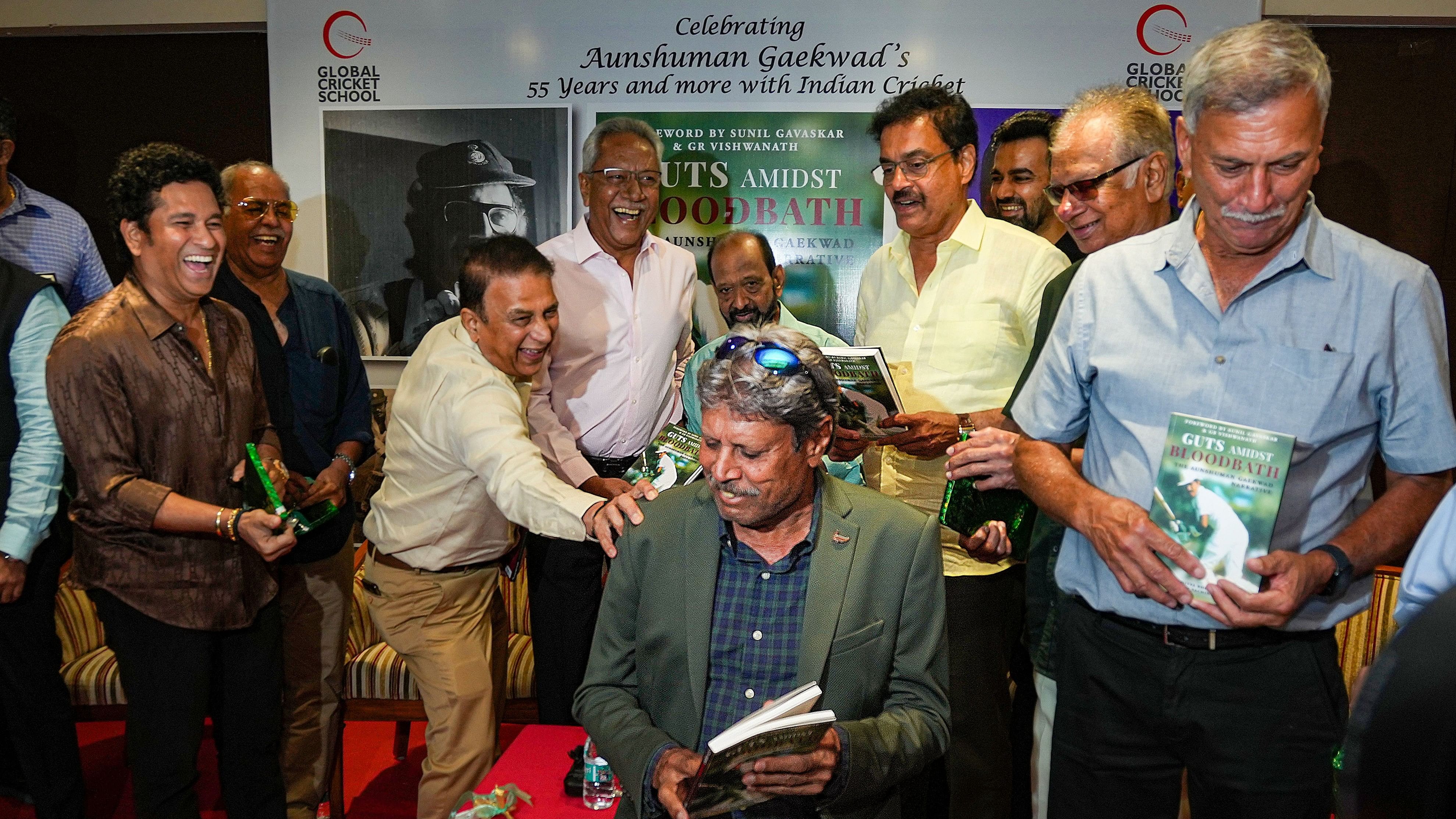
In this file photo, Anshuman Gaekwad (fourth from left) is flanked by his former team-mates at the launch of his book last year.
Credit: PTI
Bengaluru: Just over a year ago, Anshuman Gaekwad launched his memoir named "Guts Amidst Bloodbath: The Anshuman Gaekwad Narrative." Few titles could have captured the former Indian cricketer's essence better. Gaekwad, who breathed his last on Wednesday night in Vadodara after a prolonged battle with blood cancer, scored 1,985 runs in 40 Tests at an average of just over 30, numbers that don't stir one's imagination. But some careers have to be seen in relevant contexts.
Mike Brearly managed just 1,442 runs in 39 Tests at fewer than 30 runs an innings, but lasted as many matches as he did because England thought his captaincy far outweighed his (lack of) performances with the bat. The title of Gaekwad's book isn't a metaphor for his fearless batting against some of the meanest fast bowlers of that time. He literally batted with a bloodied body against West Indies' battery of quicks, who seemed to derive more pleasure in hurting batters than dismissing them.
Obviously, the innings that typifies Gaekwad's limitless threshold for pain is the 81 (retired hurt) in the Jamaica Test on India's tour of the Caribbean in 1976. Having suffered the ignominy of failing to defend a target of 403, the then world-record chase, in Port of Spain, West Indies were determined to not just beat India but hurt them also. Drawing the infamous "Bodyline series" analogy, Gaekwad says in the book that if an under-fire skipper Clive Lloyd reprised the role of Douglas Jardine, the young Michael Holding was his Harold Larwood -- the enforcer of the "leg theory" against Don Bradman.
Holding, along with three other pacers, employed the same tactic against Indian batters and left many of their players' bodies bruised and battered. Gaekwad, over the course of his 450-minute stay at the crease, took blows on his ribs, wrists and thighs but didn’t flinch. Even a broken, bloodied right middle finger, with the fingernail ripped off, didn't deter him from continuing. It needed a wicked bouncer that crashed into his ear to take the right-hander off the field.
If courage, like runs scored and wickets taken, were to be quantified, Gaekwad would have effortlessly topped the charts. For someone who started as a spinner and lower-order batter, it was remarkable that the Baroda cricketer went on to become a trusted opener alongside Sunil Gavaskar. In fact, he had started opening only in the second innings of the preceding Port of Spain Test that India won. His small but crucial 28 is considered significant in India's successful chase as it gave India the visitors a good start for the later batters to feast on tired home bowlers.
Incidentally, 22 of Gaekwad's 40 Tests were against West Indies, yielding 1,032 runs at an average of 27.89 with a hundred and six fifties. His defiant 201, his only other hundred, against Pakistan in Jalandhar was another example of his dour batsmanship under pressure. India were 209/5 in reply to Pakistan's 337 all out but Gaekwad, in the company of Roger Binny (54), took the hosts to safety.
Post his playing days, Gaekwad donned various hats -- coach, selector, administrator and head of BCCI's Cricket Advisory Committee that picks head coaches of India's men and women's teams.
Anil Kumble knows a thing or two about Gaekwad, who was India's coach and selector at various stages of the leg-spinning great's career. When Kumble took his perfect 10 in Delhi against Pakistan, Gaekwad was the coach.
"I distinctly remember... I think he would have won the 100-metre race) when I took the 10 wickets,” a chuckling Kumble, who has been a huge Gaekwad fan, told DH. “He probably ran the fastest that he has ever from the dressing room to the ground.”
With the help of seniors in the team, Gaekwad ensured that India stayed focussed on the game when the match-fixing scandal in 2000 was a big distraction.
"He had good communication skills and commanded respect from every one; not just the senior players but from juniors as well. We all looked up to him and he sort of ensured the team stayed together. He managed all the things that were needed to be for us to prepare and he was good at organising all of that."